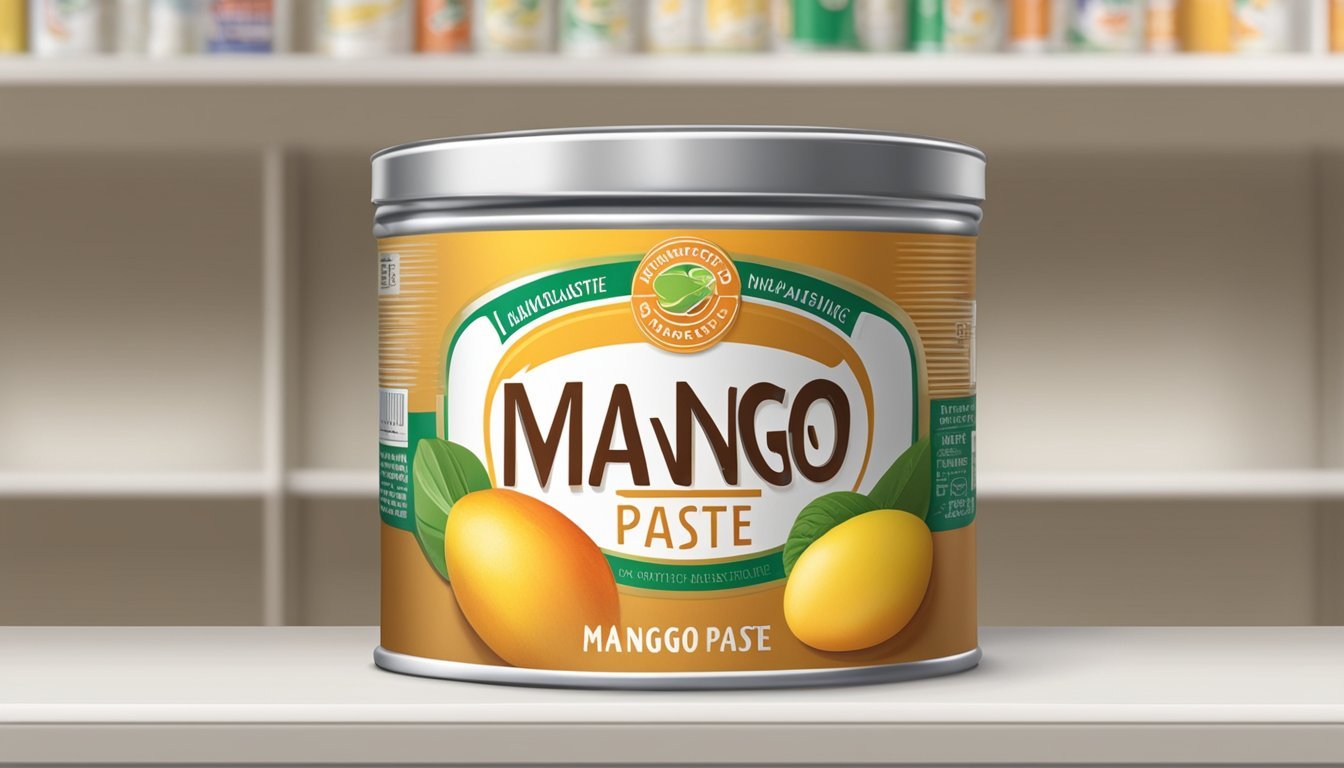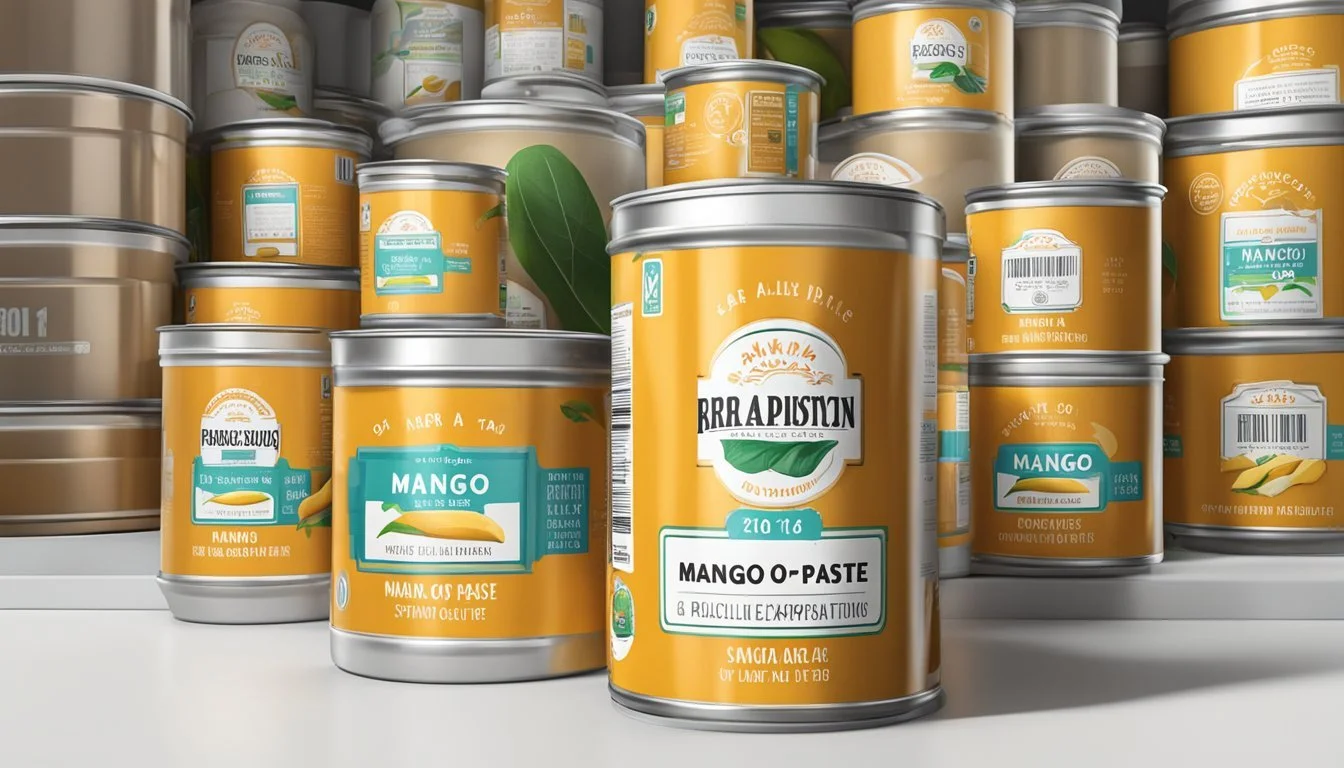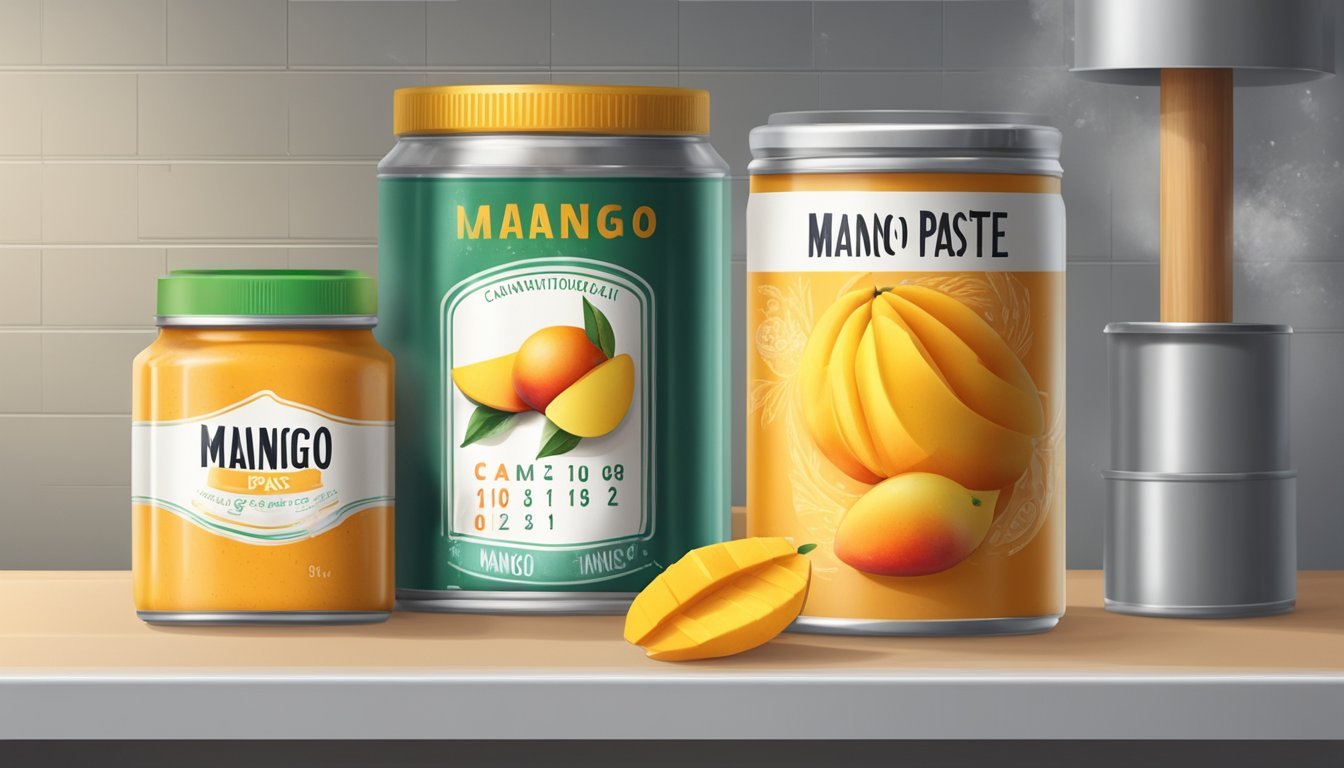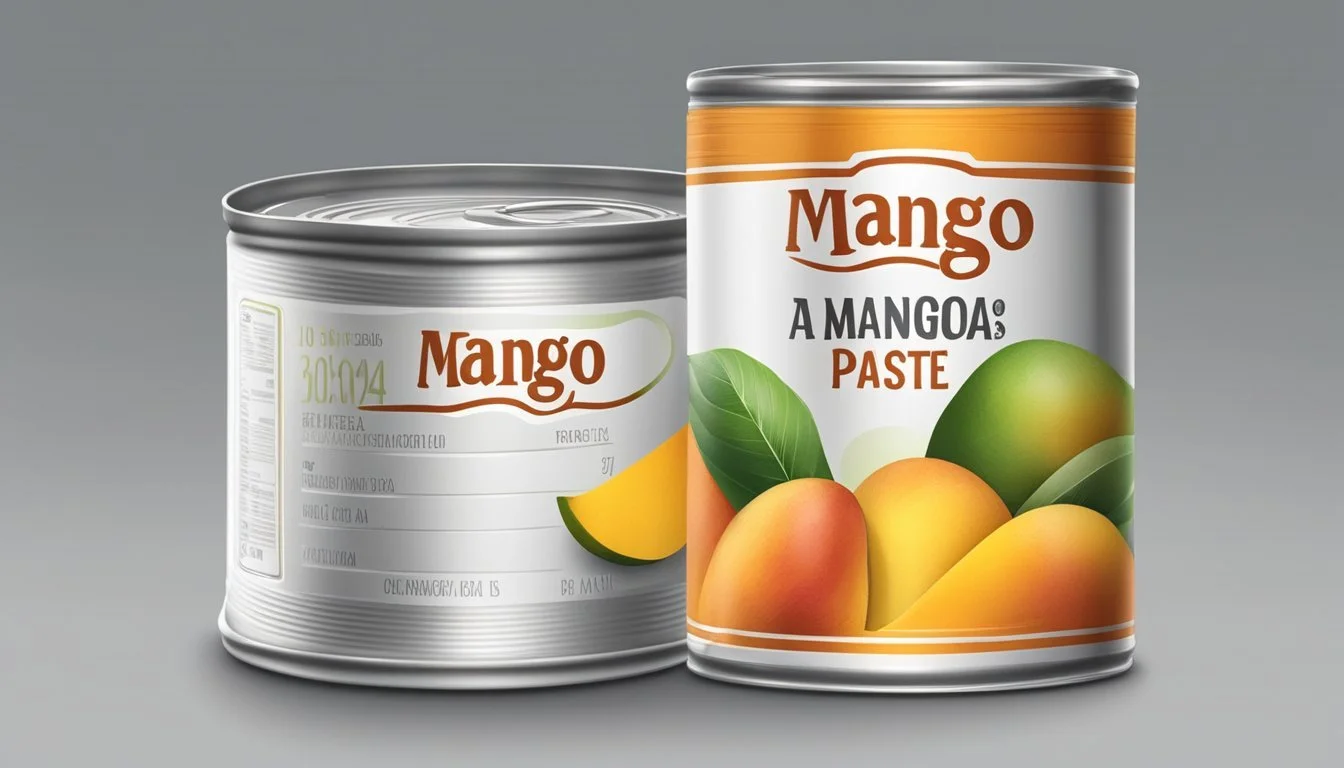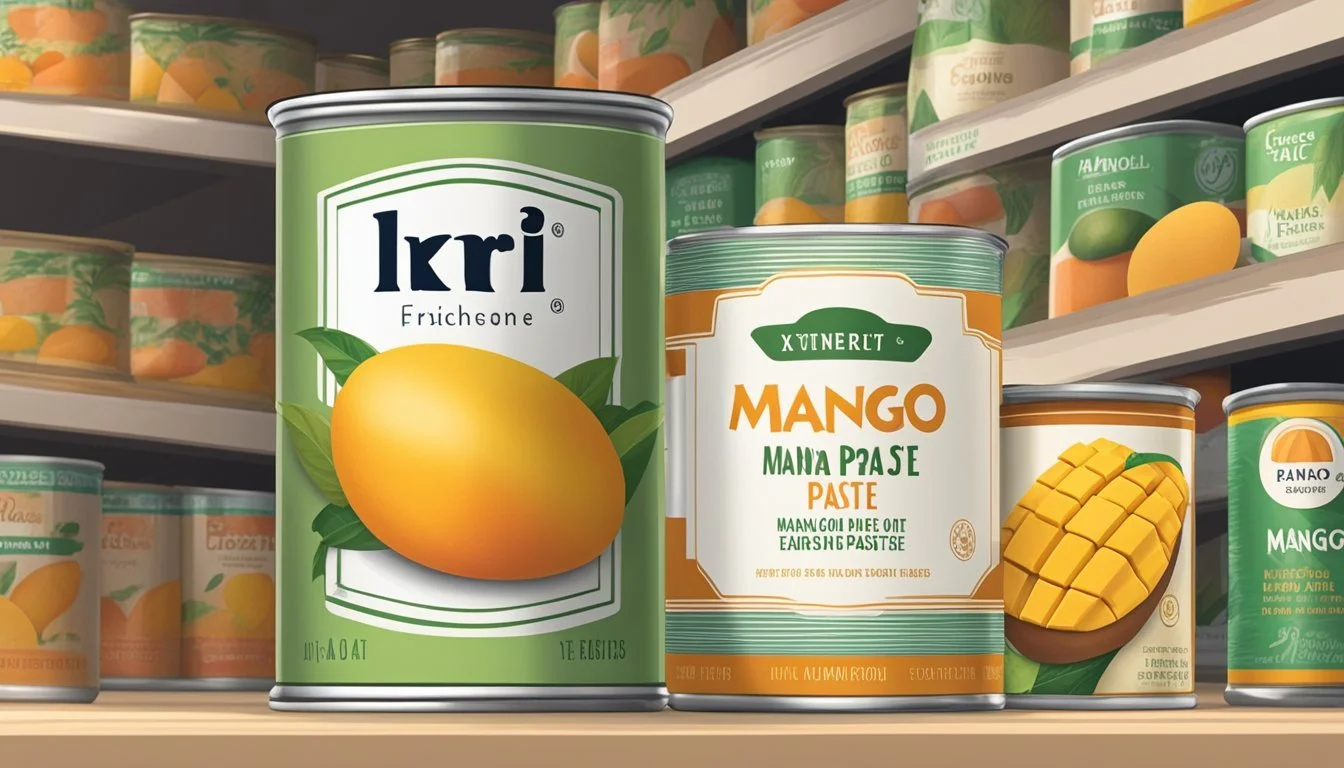How Long Does Canned Mango Paste Last?
Shelf Life and Storage Tips
Canned mango paste, just like other canned goods, offers a convenient and shelf-stable option for consumers who enjoy this tropical fruit's sweet flavor beyond its season. The shelf life of canned mango paste is influenced by several factors, including the canning process, storage conditions, and the presence of preservatives. Generally, when stored properly, canned mango paste can maintain its quality for an extended period.
The quality of the paste, an important aspect for consumers, can vary over time. Initially, the taste, aroma, and texture closely resemble that of fresh mangoes. However, over time, these can diminish gradually. It's recommended to consume the product within the timeframe suggested by the manufacturer to ensure the best sensory experience. Proper storage in a cool, dry place away from direct sunlight plays a pivotal role in preserving the quality of canned mango paste.
When discussing shelf life, safety and quality go hand in hand, but they are not the same. While the safety of the product can extend beyond the 'best by' date if the can remains sealed and undamaged, the optimal quality is most likely enjoyed within the first year or two. It is crucial to inspect the can and its seal before use; any signs of damage or spoilage should be taken seriously, and the product should be discarded.
Understanding Canned Mango Paste
Canned mango paste is a concentrated product derived from mangoes, offering both flavor and nutritional benefits. It's important for consumers to be aware of its composition and how it's categorized in terms of acidity.
Composition and Nutrition
Mango paste is made by pureeing mango flesh and reducing it to a thick and rich concentrate. It often contains added sugar, which can enhance the already sweet flavor of the mangoes. The nutritional profile of mango paste includes vitamin C, vitamin A, and trace amounts of fiber and minerals. Its high concentration means that a small serving of mango paste can add a substantial flavor and nutritional boost to a variety of dishes.
Typical nutritional values per 100g of canned mango paste:
Calories: Variable depending on added sugar
Vitamin C: Significant percentage of daily value
Vitamin A: High in beta-carotene, which converts to vitamin A
Minerals: Contains potassium and trace amounts of calcium and iron
Categorized as Low-Acid or High-Acid Foods
Mangoes are classified as a low-acid fruit, with a natural pH greater than 4.6. Therefore, mango paste, as a derivative of the fruit, also falls into this category. This categorization is crucial for canning processes because low-acid foods require specific canning techniques to prevent spoilage and the growth of bacteria, including botulism. When canned, mango paste must be processed in a way that ensures safety and extends shelf-life, commonly achieved through the use of pressure canning.
Factors Affecting Shelf Life
When considering the shelf life of canned mango paste, it is essential to consider the conditions under which the paste is stored, the type of packaging used, and the effectiveness of the vacuum seal, as these factors directly impact product quality and safety.
Storage Conditions
The environment where the canned mango paste is stored plays a critical role in its longevity. Keeping the cans at a consistent, cool storage temperature can greatly extend the shelf life while ensuring the quality of the mango paste remains high. It is important that the paste be stored away from direct sunlight and in a dry place to prevent the deterioration of the can itself, which can lead to rust and potential contamination.
Packaging Influence
The material and integrity of the canned mango paste's packaging are vital to protecting against external elements that can affect its shelf life and quality. High-quality, corrosion-resistant materials can prevent damage to the can and subsequent spoilage of the mango paste. Any signs of damage, such as dents or swelling, can indicate potential issues and a compromised shelf life.
Importance of Vacuum Seal
An effective vacuum seal ensures that the canned mango paste remains free from contamination and oxidation, both of which can significantly influence the product's shelf life. The absence of air within the can limits the growth of microbes and the process of oxidation, further preserving the quality of the mango paste. A compromised seal can result in a shorter shelf life and a decline in the paste's flavor and texture.
By understanding and controlling these three factors, manufacturers and consumers can help ensure that canned mango paste maintains its best quality for as long as possible.
Storage Guidelines
When preserving the quality of canned mango paste, adhering to correct storage procedures is crucial. These guidelines cover the two primary storage environments: in the refrigerator and freezer, and in a pantry setting.
Best Practices for Refrigerator and Freezer
Storing opened canned mango paste in the refrigerator helps maintain its freshness. Transfer the paste to an airtight container and ensure it's tightly sealed to prevent the introduction of contaminants. The mango paste should be consumed within 5 to 7 days when refrigerated.
For longer preservation, one may freeze the paste. When freezing mango paste, leave some space at the top of the container as it will expand when frozen. In a freezer set to 0°F (-18°C), the paste can maintain its quality for up to 3 months. Thawing should be done in the refrigerator, and once thawed, the paste should not be refrozen.
Ideal Conditions in a Pantry
Prior to opening, canned mango paste should be stored in a cool, dry place like a pantry or a cabinet away from direct sunlight and heat sources. The ideal ambient temperature is at, or slightly below, room temperature (around 70°F or 21°C). An unopened can maintains its best quality for 1 to 2 years; although safe to consume beyond this period, the quality may diminish.
Pantry Storage Conditions Details Temperature Cool and stable, around 70°F (21°C) Light Away from direct sunlight Humidity Low to prevent container rust Timeframe for Unopened 1 to 2 years for optimal quality
Always inspect the can for signs of damage or spoilage before use, regardless of the storage duration.
Identifying Spoilage
When it comes to canned mango paste, the integrity of the product can be compromised due to spoilage, which poses serious food safety concerns. She must be vigilant for changes that indicate the past is no longer safe to eat.
Visual and Texture Changes
She notices that fresh canned mango paste has a consistent color and a smooth texture. Any deviation from this could indicate spoilage. The appearance of mold or any discoloration—such as dark spots or areas of greenish-white fuzz—shows that the mango paste has been compromised. Similarly, if the texture is no longer smooth—perhaps becoming lumpy or overly thick—it's no longer suitable for consumption.
Understanding Bulging and Leaking
Bulging cans point to gas production, a clear sign of bacterial activity and potential foodborne illness like botulism, while leaking indicates that the seal of the can has been broken. The following details are crucial for her to recognize these risks:
Bulging: If the can or lid appears to bulge outward, it's due to gas released by bacteria inside. This gas buildup increases pressure, causing the can to deform.
Leaking: She should look for any signs of liquid escaping from the can, which suggests the seal has failed. This compromises the sterile environment within the can and allows external contaminants to enter.
Any can showing these signs should be disposed of immediately and with care to prevent the potential spread of toxins.
Safety and Consumption
The consumption of canned mango paste is largely safe when the product is stored and handled properly. Consumers should be vigilant about the integrity of the can and the appearance of the product before use to prevent health risks.
When to Discard Canned Goods
Consumers should discard canned mango paste if the can shows any signs of damage, such as:
Dents that are deep, especially if they affect the seams of the can.
Rust that cannot be wiped away without creating a hole in the can.
Bulging which can indicate gas production from bacteria.
Leaks, which allow air and pathogens to enter the can.
In addition, if upon opening the can, there is an off-odor or the mango paste has an unusual color or texture, it should also be discarded. The shelf life of canned mango paste typically extends beyond the expiration date when stored in a cool, dry place; however, consumers should rely on these visual and olfactory cues rather than solely on the date printed on the can.
Possible Risks of Consumed Spoiled Paste
Spoiled canned mango paste poses significant health risks, particularly due to:
Botulism: A potentially fatal illness caused by a toxin produced by the Clostridium botulinum bacteria, which can thrive in the low-oxygen environment of a sealed can if the food was not processed correctly.
Foodborne Illness: Other pathogens can also multiply in spoiled food products, leading to various foodborne illnesses.
Consumers should never taste the mango paste to determine its safety, as the ingestion of toxins, even in small amounts, can be dangerous. If any signs of spoilage are present, the safest course of action is to dispose of the product immediately without tasting it.
Maximizing Shelf Life
To maintain the freshness and taste of canned mango paste, proper storage techniques are vital. They ensure the product remains safe to consume and retains its quality over time.
Freezing and Thawing Methods
Freezing excess mango paste can significantly extend its shelf life beyond refrigeration. When freezing, one should:
Transfer the mango paste to an airtight container or heavy-duty freezer bag to prevent freezer burn.
Label the container with the current date to keep track of its longevity.
Thawing should be done in the refrigerator, and the paste should be stirred well before use to ensure an even consistency.
Using Leftovers
To make the most of leftover canned mango paste, one should:
Keep leftovers refrigerated and tightly sealed.
Use within 4-6 days to ensure the best quality in terms of taste and safety.
Incorporate the paste into dishes like marinades, dressings, or baked goods to enjoy its rich flavor until it's gone.
Canning Tomato Paste at Home
Preserving the freshness and flavor of ripe mangoes can be effectively achieved through home canning, particularly when making mango paste. This section will guide the reader through selecting quality mangoes, discussing essential equipment, and detailing the canning process.
Selecting Ripe Mangoes for Canning
For the best quality mango paste, one must start with fully ripe mangoes. Ripe mangoes are fragrant and yield slightly to gentle pressure, indicating they are at the peak of their sweetness and flavor. Unripe mangoes lack the necessary sugar content and may result in a tart paste.
Characteristics of Ripe Mangoes:
Color: Deep yellow to orange, depending on the variety
Texture: Slightly soft to the touch
Aroma: Sweet and fruity
Essential Canning Equipment
Before beginning the canning process, it is imperative to assemble all the necessary equipment. A boiling water bath canner or a large, deep saucepot with a lid will be required. Additionally, canning jars, 2-part lids (flat lids and screw bands), a jar lifter, a funnel, and a ladle are crucial to ensure a safe and efficient canning experience.
Canning Equipment Checklist:
Boiling water bath canner or large saucepot
Glass canning jars with new, 2-part lids
Jar lifter and funnel
Ladle
Clean cloths or towels
Step-by-Step Canning Process
When one is ready to can their homemade mango paste, they should follow a tested canning recipe and adhere to the below steps. This will ensure the mango paste is safely preserved.
Prepare the Mangoes: Wash, peel, and remove the mango flesh from the pit. Puree the flesh until smooth.
Cook the Mango Paste: Transfer the puree to a large pot. Cook over medium heat, stirring frequently, until thickened.
Sterilize the Jars: While the paste cooks, place the jars in the canner. Cover them with water and bring to a simmer to sterilize.
Fill the Jars: Using a clean funnel, carefully ladle the hot mango paste into the jars, leaving the recommended headspace.
Seal the Jars: Wipe the rims with a clean cloth, place the lids on the jars, and screw on the bands until fingertip tight.
Process the Jars: Place the jars in the boiling water bath canner, ensuring they are completely submerged. Process for the time specified in the recipe.
Cool and Store: Remove the jars and let them cool undisturbed for 12-24 hours. Check seals, then store in a cool, dry place.
Following these steps, the homemade canned mango paste should last for at least a year if stored properly in a cool, dark place. Always ensure each jar is sealed correctly to maximize preservation time.
Additional Tips for Longevity
When preserving mango paste through canning, ensuring optimal storage conditions will maximize its shelf life. Below are key recommendations to keep the mango paste at its best for as long as possible.
Storage Location: Mango paste should be stored in a cool and dry place. Pantries or cabinets away from heat-producing appliances are ideal. Exposure to high or low temperatures could compromise the seal and quality of the product.
Temperature Stability: Maintaining a consistent temperature helps prevent deterioration. Sudden temperature changes can cause the cans to expand and contract, potentially breaking the seal and leading to spoilage.
Avoid Direct Light: Sunlight or direct light can heat the contents, leading to fading and flavor loss. It's important to store home-canned goods in the dark.
Humidity Control: Humidity should be kept in check. High humidity can lead to corrosion of metal cans and potentially damage the seal.
Here's a simple table summarizing the optimal conditions:
Condition Ideal Setting Temperature Cool (ideally below 75°F) Light Minimal, avoid direct sunlight Humidity Low Location Dry place, away from appliances
Following these guidelines will help maintain the safety and taste of home-canned foods, including mango paste. Remember to always inspect cans before use; bulging, leaking, or rusted cans can be a sign of spoilage and should not be consumed.

